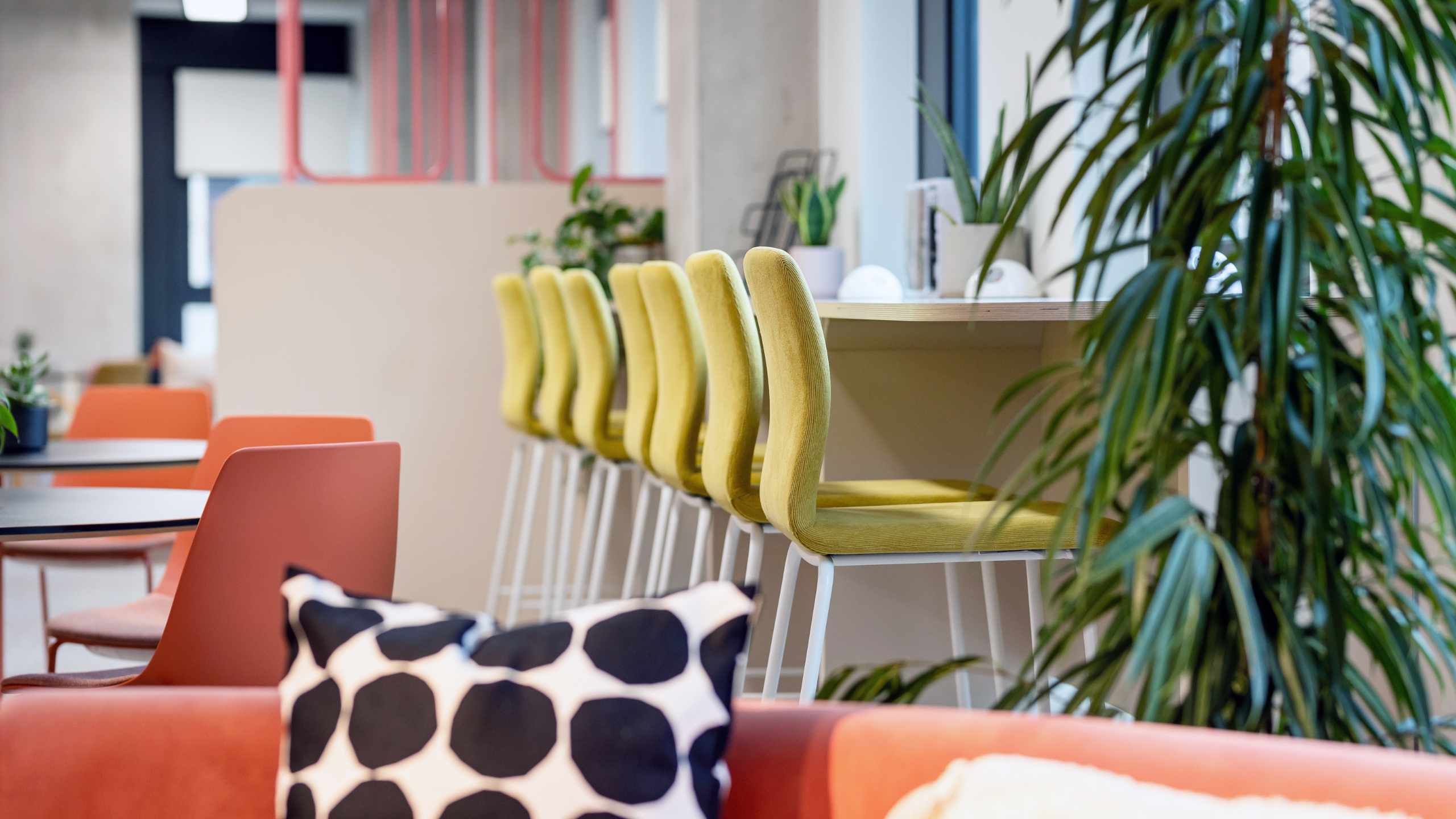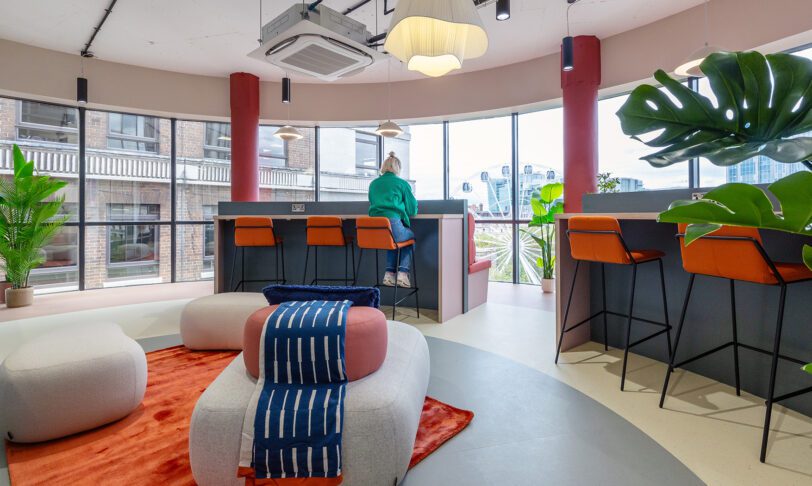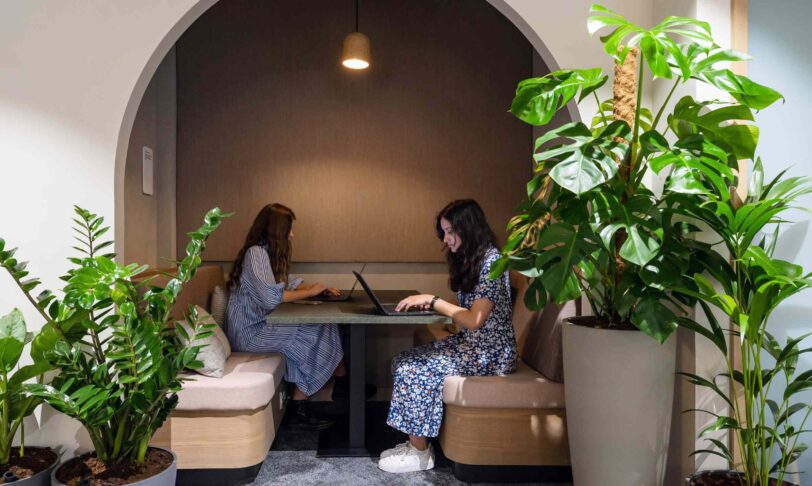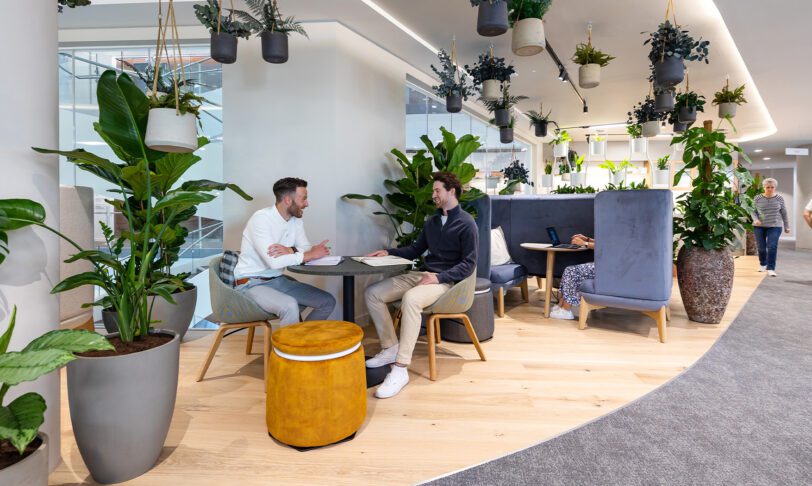How to ensure a strategic approach for sustainable office design
Sustainable office design means businesses building a workspace that addresses their environmental objectives, and reflects their commitment to social responsibility, considering three key principles: People, Planet, and Profit. Landlords can help to facilitate this by offering sustainable office spaces. These offer an abundance of benefits, often saving money for owners while attracting great tenants seeking an enriching, eco-conscious work environment.
Interested in designing a new office and want to emphasise your commitment to sustainability? This commitment must form the basis of your office design strategy. However, whilst considering ways to reduce embodied carbon and improve energy efficiencies, it is important that when communicating these improvements you aren’t simply greenwashing: evangelising your company as sustainable while not tackling deep-rooted issues. Businesses should be honest about their practices and goals, and ensure any sustainability claims are backed up with data and are clear to understand. If your supposed green credentials raise any red flags, inquisitive consumers will often be able to cut through the bluster.
To reiterate: a strategic approach means sustainability is at the core of your design plan and should be considered from the very start. This will allow you to make more informed decisions, which will ultimately save you time and money compared to a sustainable office fit-out. It could even help you attract talented employees, given that many people are actively seeking employers who are committed to sustainability. In this article, we’ll be offering clear and actionable tips to help you get the most out of a strategic approach to sustainable office design.
What are some of the benefits of sustainable office design?
Sustainable office buildings are becoming increasingly popular with both commercial landlords and tenants. For landlords, investing in sustainable office buildings can often attract a higher tenant ‘covenant’, maximising lease value and saving long-term costs.
For tenants, sustainable offices offer an enhanced employee experience. This doesn’t just mean employees get to look at some lovely plants (although this is definitely a bonus!), it means happier, healthier staff. For instance, sustainable offices often have better air quality and an abundance of natural light – both of which have been linked to increased productivity and wellbeing. Read more about workplace wellbeing here.
Furthermore, people want to make sure that prospective employers are a good match for their own personal values. Part of this involves looking at sustainability credentials when scoping out new places to work. For example, tenants may be attracted to an organisation that is taking direct action to reduce its carbon footprint.
Finally, building owners and companies who go the extra mile to create sustainable workplaces can choose to receive awards and certificates, adding some additional clout to their credentials. For example, LEED (Leadership in Energy & Environmental Design) certification and BREEAM (Building Research Establishment Environmental Assessment Method) are two accreditations that are well-regarded by discerning industry professionals. Another key example that relates directly to our work in office fit-outs is SKA. SKA offers a set of criteria for fitting out office spaces in an eco-conscious manner, and will also help design teams ascertain which aspects of a fit-out will have the most impact on sustainability goals.
The importance of sustainability in an office design strategy
An office design strategy isn’t just a plan of action, it’s proof that the chosen approach to office design meets people’s unique needs and exemplifies an organisation’s values. It can also help embed sustainability into every single decision and stylistic choice.
Considering sustainability from the start of the design process will often save money (and quite a bit of hassle) compared to updating and refurbishing offices retrospectively. This is because companies can identify potential savings more quickly and accurately than if they were only considering energy efficiency after the fact. For example, companies may discover that installing solar panels would be far more cost-effective than replacing existing lighting fixtures with LED bulbs. Furthermore, by sticking with the best solution from the start rather than cycling through an array of products and installations, you can increase product lifecycles and save on waste.
What are some measurable sustainability goals that can be included in an office design strategy?
When devising an office design strategy, it is important for organisations to set measurable goals that are specific to their objectives. This will ensure that all decisions made thereafter are aligned with these goals. It also gives you valuable highlights to showcase your sustainability efforts, or back up your claims when needed. Some examples of measurable goals include:
- Maximising natural light to reduce energy costs and improve employee productivity
- Improving natural ventilation and air quality through sustainable HVAC systems
- Minimising energy consumption and emissions through eco-friendly materials, equipment and renewable energy sources
By incorporating these types of measures into an office design strategy as early as possible, organisations can save time and money while taking direct action towards reducing their carbon footprint. It’s also important to track the progress of these goals over time, as well as metrics such as productivity, employee wellbeing and satisfaction. This will offer concrete evidence of whether changes are having the desired effect.
Tips for incorporating sustainability into an office design strategy
Location: Location is often an overlooked aspect of an office design strategy. Selecting a building that is close to public transport and other amenities can hugely reduce the environmental footprint of your workplace. Additionally, selecting a building with existing sustainability features such as efficient insulation or solar panels can also save on energy costs in the long run.
Office layout, spacing and structure: Several common features in the layout and structure of offices can indirectly save on any costs. Insulation and ventilation are key to sustainability, and open-plan offices often provide better heat and air circulation. Hot desking is also a great example of how businesses can reduce energy consumption by not having to maintain individual workstations that often go unused.
Design materials: Selecting the right building materials is essential when designing a sustainable office space. Materials with low environmental impact should be prioritised over those that require large amounts of energy to produce or transport and create a larger carbon footprint. Additionally, very durable materials should be selected wherever possible, as this will reduce the need for replacements and repairs down the line.
Full life cycle products: More companies in need of a face lift are moving away from an ‘out with the old, in with the new’ mindset, and opting for a more circular approach such as using restored furniture that has been given a new lease of life. This taps into the ‘Circular economy’ where products are re-used rather than scrapping them and extracting new resources. At Interaction, we embed circular economy thinking into all our projects, identifying products and materials that we can re-use wherever possible.
Office furniture and interior styling: Furniture made from wood or recycled materials is generally the best option, provided that these pieces can be reconfigured easily to accommodate any changes to the work environment in future. You may also want to consider incorporating biophilic elements, as these are quickly becoming a hallmark of modern, sustainable workplaces.
Sustainable offices built by Interaction
Looking for a company that can help you put together a compelling workplace strategy and design modern, eye-catching, sustainable offices? Look no further…
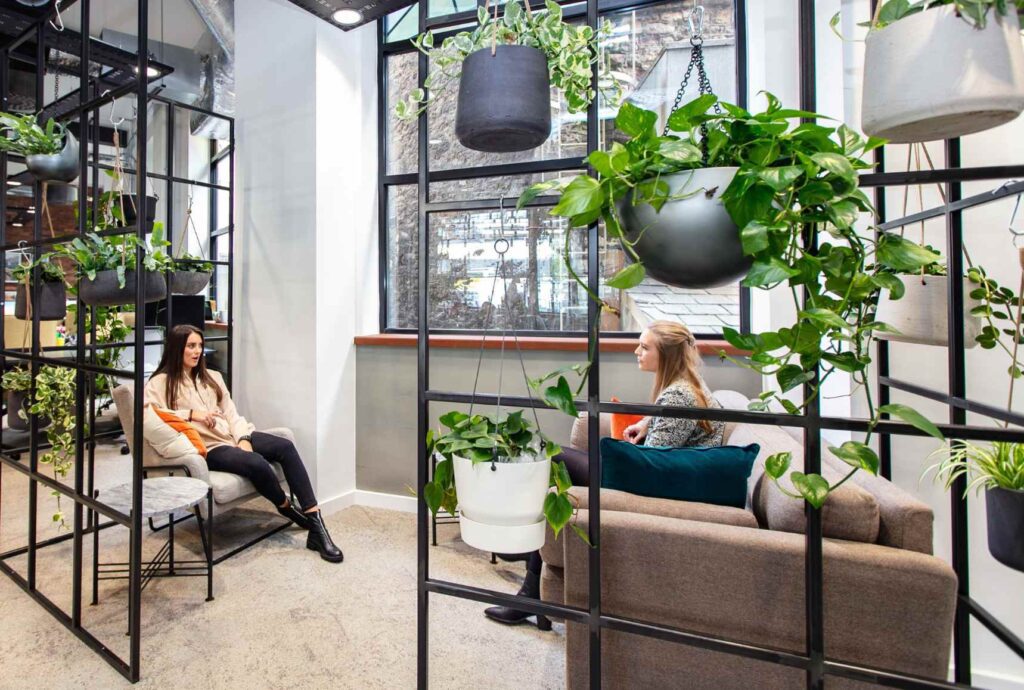
Openwork came to us with a strategy distilled into two simple words: ‘sustainability’ and ‘people’. This large open-plan office contains furniture sourced from sustainable contractors and LED lights throughout, saving short and long-term energy costs.
Interaction have been designing and building best-in-class workspaces for over 30 years. Want to find out more about our sustainable workplace strategy and office design services? Get in touch at 01225 485 600 or why not schedule a chat with Charlie.
